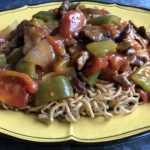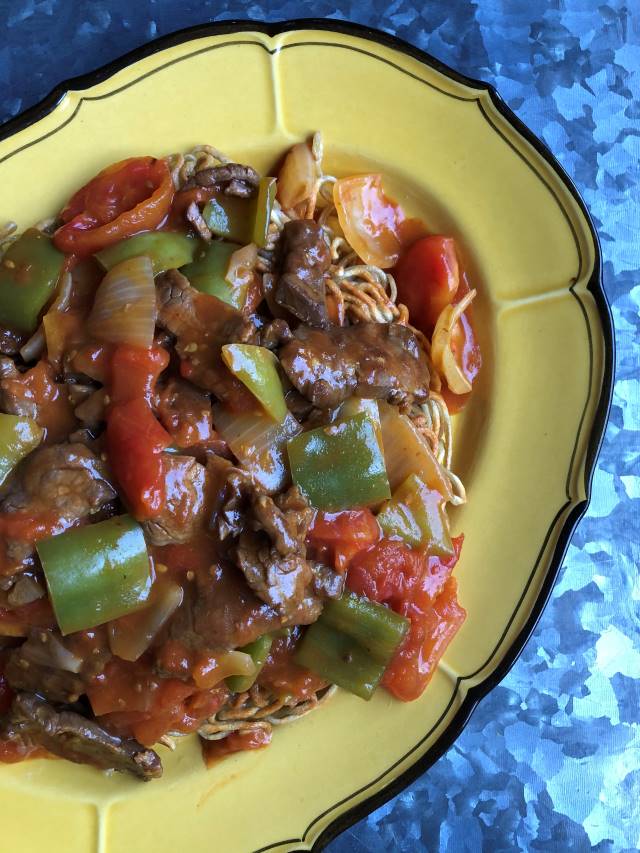
Chop suey, egg foo yung and fortune cookies come to mind when most people think of Chinese-American food but my friend Victor Fong zooms in on homey dishes like his mom’s tomato beef chow mein. “It’s not a nuanced dish. It’s really straightforward,” he humbly said. He liked his mom’s version so much that at one point, Emma Fong made it every other day for her only son. Eventually, it became a monthly occurrence at their home in Los Angeles Chinatown.
“Mom’s version was great but the Jade Cafe had a great version too, including tomato beef curry. Put curry in yours sometimes,” he cried out. His father, Henry Fong, made it at Yee Mee Loo, the legendary restaurant where he was the lead chef and a part owner.
May celebrates Asian American heritage month, so I called to get Victor’s recipe for tomato beef chow mein, which he’d made for me years ago. I’d made the quotidian recipe from cookbooks but none tasted as good and comforting as what Victor had prepared. As we walked through the recipe, he gifted me a bit of his family history.
Born in 1945 in Chinatown Los Angeles, Victor experienced the neighborhood in its heyday. The places he wistfully mentioned shuttered long ago. We spoke mostly about Yee Mee Loo, a swank place on the corner of Spring and Ord that attracted celebrities and artists. “I met all kinds of people there, like actor Leo Carillo who played with me when I was two years old,” Victor said.
Developers tore down Yee Mee Loo’s brick building in 1989 and replaced it with a minimall. Crafted in China and originally used in filming The Good Earth, the ornate carving from the restaurant’s six-stool Kwan Yin bar was moved eastward to Glendale at Cinnabar and then westward to the Formosa Cafe (below) on Santa Monica in West Hollywood.
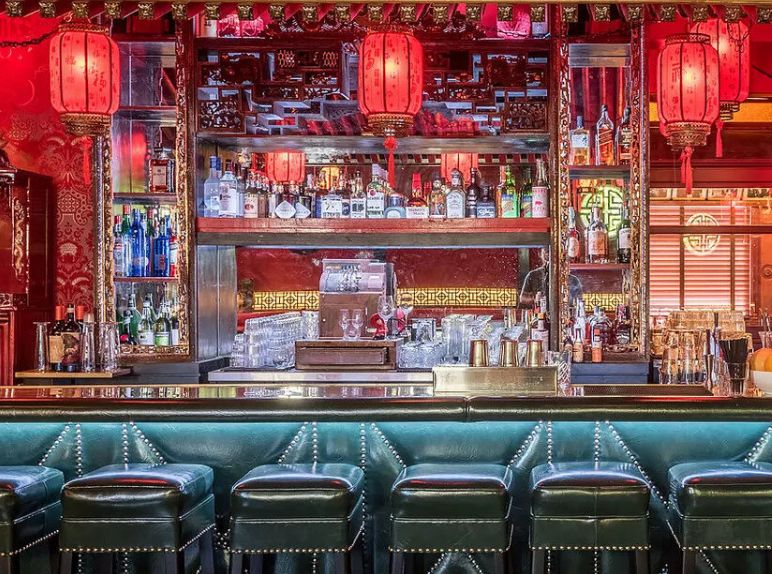
The Yee Mee Loo bar and its tiki “blue drink” remain in the fooderati’s consciousness, yet no one mentions the people behind the original restaurant.
Lap Chong and Chorizo
Born in 1898 in southern China, Henry Fong wanted a better life. He sought to immigrate to America like many others of his generation but the Chinese Exclusion Act, passed in 1882 and not repealed until 1943, prohibited his entry. Yet he was very determined. The first time he came to America, officials sent him back to China so in the early 1920s, Mr. Fong embarked on a ship that delivered him as close to California as possible.
He arrived in Mexico, settling in Mazatlan where he lived for eight years honing his skills as a sausage maker. His specialties? Sweet Chinese lap chong and spicy Mexican chorizo, Victor said. His father joined the Chinese community of men in Mazatlan (the city’s first hotel to have a restaurant inside was the Luen-Sing Hotel, opened in 1850 by a Chinese immigrant). And at some point, the elder Fong suffered and recovered from a gunshot wound. Maybe he was womanizing? “I may have half brothers and sisters in Mazatlan,” Victor noted wryly. Or maybe he struggled against mounting anti-Chinese sentiments in Mexico during the late 1920s.
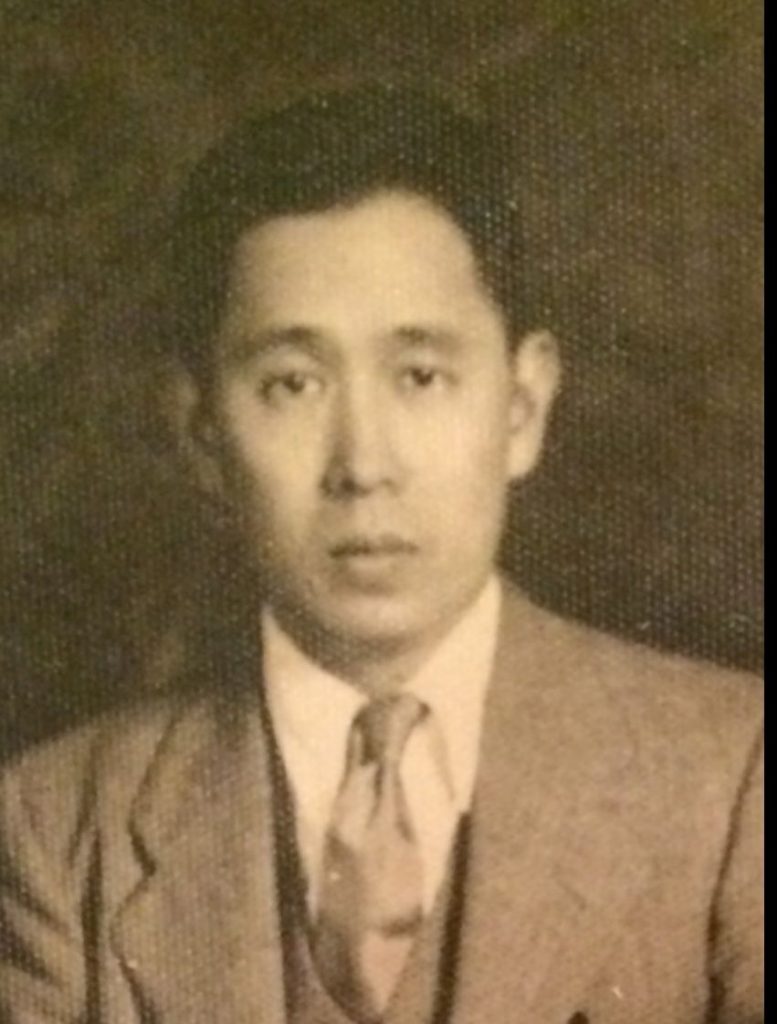
With an eye on getting to America, in 1928, Mr. Fong (above) and seven other men boarded a ship, cramming into a space the size of a closet. They traveled northward for days, with little to eat and drinking their own urine for hydration, Victor said. After jumping off the ship at the San Francisco port, Fong lived in San Francisco and Locke before making his way to Los Angeles with Emma, whom he had married in China; she arrived in the Bay Area in the late 1930s on the U.S.S. Coolidge.
Yee Mee Loo Open Kitchen
Armed with cooking skills, Mr. Fong and a group of fellow Chinese immigrants (some of whom had traveled with him from Mazatlan) desired a restaurant of their own in Chinatown. Unfortunately, none of them were documented. They persuaded David Yee, a legal resident, to front the business, which opened around 1939 when Chinatown had a revival. That explains why Yee Mee Loo’s matchbooks sported David’s name.
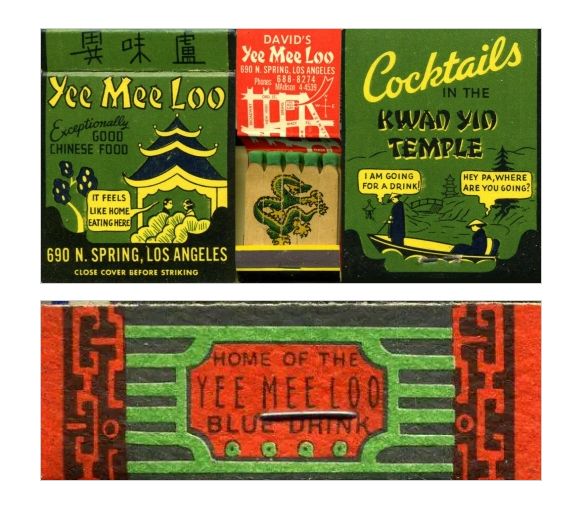
As head chef, Mr. Fong put on a show, cooking at his station right by the big front window at the restaurant. Patrons and people passing by like this man below saw all the action.
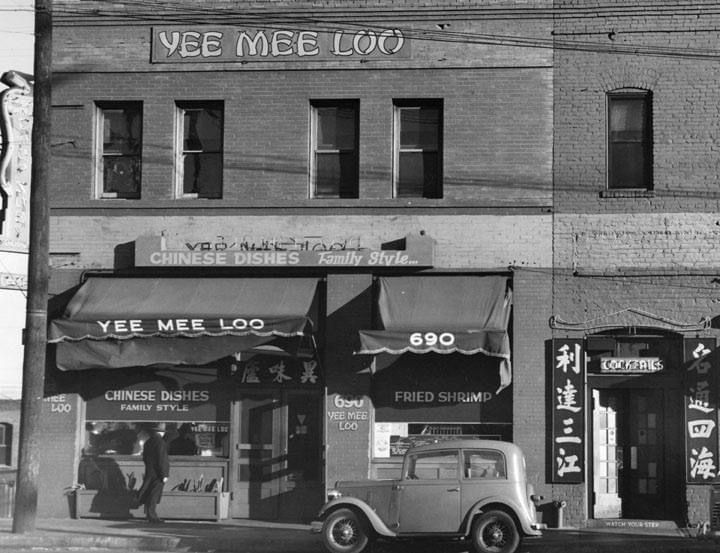
Victor and his siblings pieced together their father’s history. “Dad didn’t like us to ask too many questions about his past because in the 1940s and 50s, there were lots of FBI agents looking for undocumented people in Chinatown,” Victor explained.
His father eventually earned legal status and became a citizen in the 1980s. "It was one of his proudest moments. After that he always voted." Susan Fong, Victor's sister later wrote.
Sadly by then, Mr. Fong was no longer an owner of Yee Mee Loo restaurant. He and his cohorts had a gentlemen’s agreement with Yee, which meant they had no signed contract regarding their business relationship. Yee died young at age 40, and his widow took over ownership of Yee Mee Loo. She ran it for a spell and eventually payed them $8,000 each when Mr. Fong and his colleagues decided to move on. (Claudia and John Low later managed the restaurant until its closure.)
It was a measly amount of money. “My dad put in decades of work and had little at the end of it all. It was a famous restaurant and our family would have been wealthy,” Victor said.
Epic Wok Set Up
When I met Victor in 1989, his father had passed away. Victor cut my then-boyfriend-now-husband’s hair at a Beverly Hills salon and soon, he became my hairstylist too. We socialized outside of hair appointments and regularly shared meals in Chinatown. He was my gateway into the history of the Chinese-American experience in Los Angeles. The photo below shows the Fong family on the right; on the left sit the men who partnered with Henry Fong at Yee Mee Loo.
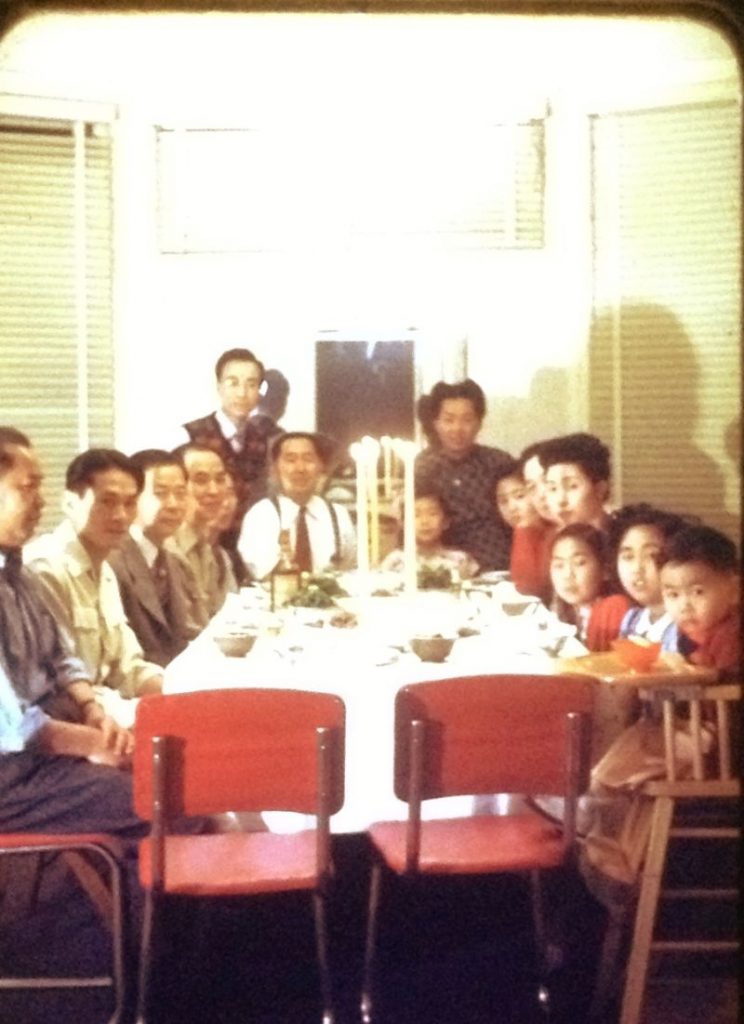
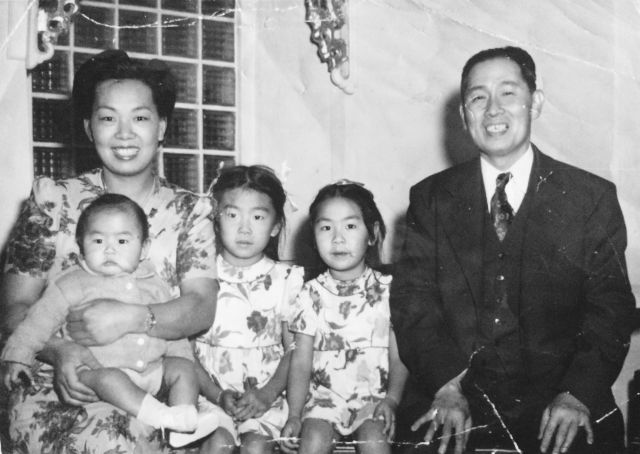
Victor described living in Chinatown in vivid, joyful detail. Above, Victor in his mother's lap, his two sisters, and father. But frankly, it was hard for me to imagine the gaiety through the smoggy haze of downtown L.A. in the 1990s. Many former residents abandoned Chinatown for the suburbs. You went there for a quick meal then sped home. (Traffic wasn’t so bad back then.)
It wasn’t until 1996 when he took us to his family’s home, that I comprehended his experience. The modest, multistoried house stood right next to the Pasadena 110 freeway entrance. A tall cinder block wall separated it from cars whizzing by at 60 miles per hour. I’d driven by countless times, often stuck in traffic and sometimes pondering what living near the freeway was like.
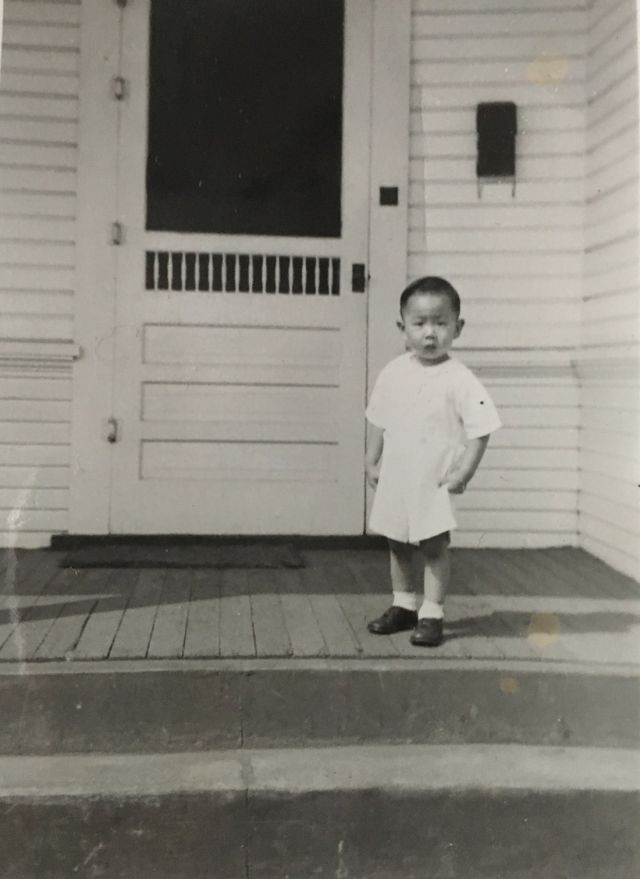
The tidy Fong home stood across from Saint Bridget Chinese Catholic Church where Victor attended nursery school and the family worshiped. His mother was devout and tight with the church; she had a key to the building, Victor noted.
The kitchen held a stunner: his father’s massive built-in wok, which spanned about three-feet wide. I envisioned large batch cooking — whole ducks(!) a suckling pig(!), a ton of delicious food being cooked up for Fong family parties.
“When my dad died, we went through his stuff and he kept a closet full of weird seasonings and condiments. He made his own salted fish,” Victor recently said. “He offered to teach me proper Cantonese cooking, but I wasn’t interested. I didn’t observe much.”
Tomato Beef Chow Mein by Instinct
Victor went to art school and became a masterful hair stylist -- not what his father expected. But when he rattled off how to marinate flank steak for tomato beef chow mein, he attributed his approach to his dad (baking soda and egg white create a velvety texture).
Mrs. Fong wasn’t a slouch in the kitchen. She regularly cooked for her kids and spoiled Victor with food. For example, he enjoyed the depth of cooked down bell pepper (think stuffed peppers) so his mother boiled the pepper and onion to reduce their harshness.
The Fong family’s tomato beef chow mein recipe is nearly a braise atop a bed of crispy panfried noodles. The savory, tangy sweet sauce is made in a pot and then the beef is added to it. It’s not a typical stir-fry, and it’s wonderfully simple.
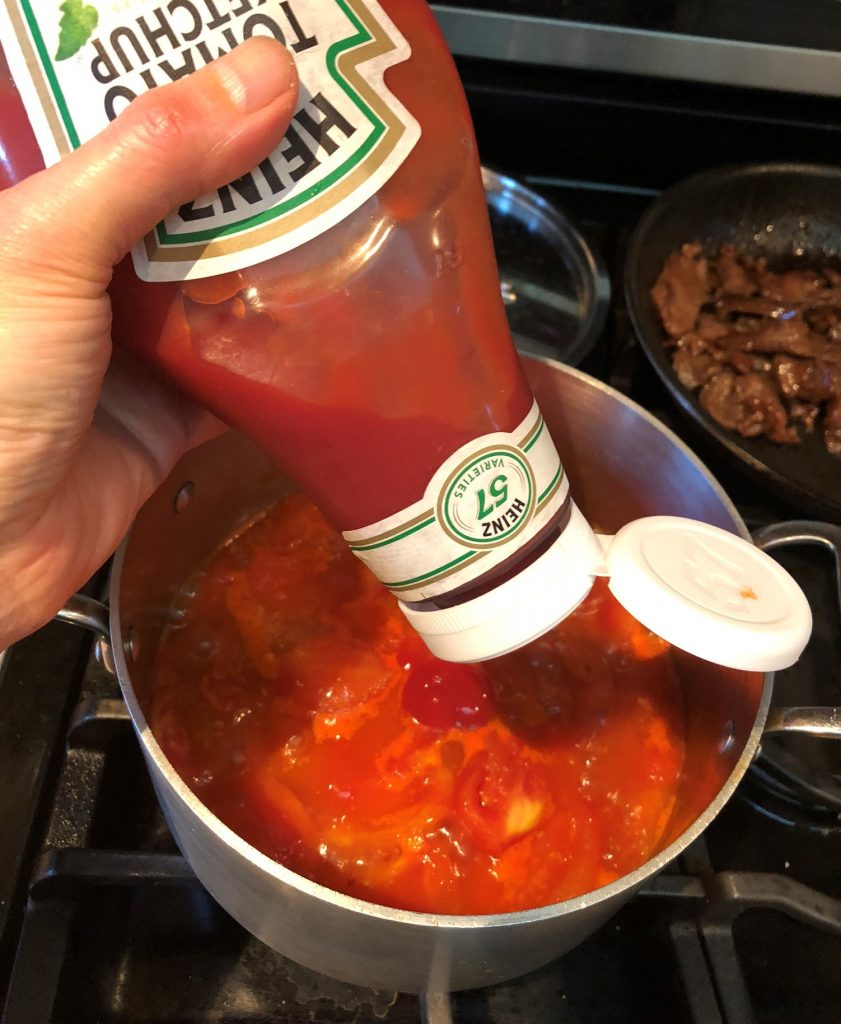
“Ketchup and lots of sugar are key. They help to get the flavor right. Remember to taste adjust the flavor throughout,” Victor said. The first time around, I shied away from abundantly adding those ingredients and had to add more. He was right. Before we hung up, he added, “Use firm-ripe tomatoes so they somewhat hold their shape. No soggy, ripe ones.”
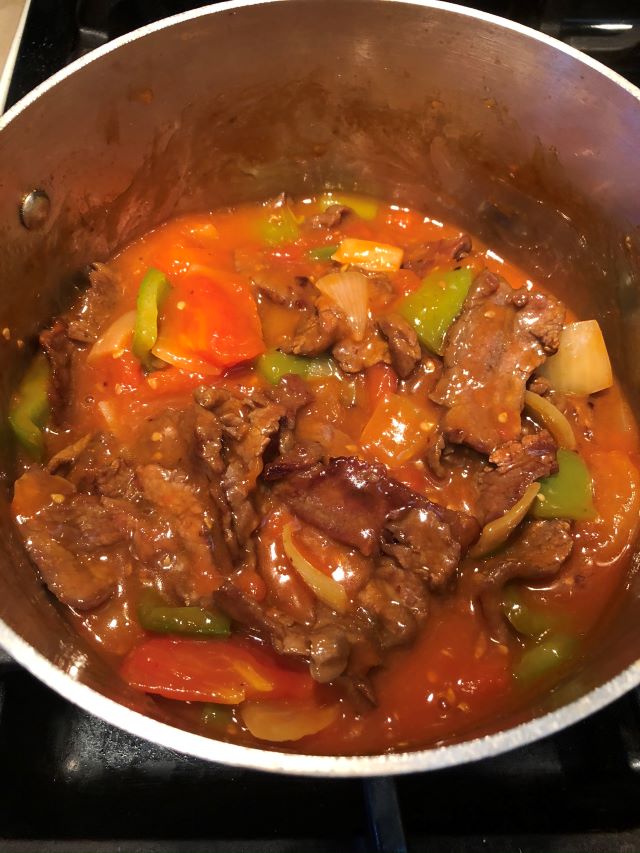
I followed his advice to develop this Chinese-American topping. I texted him the photo, and he responded, “It looks perfect! Veggies cut right! Wish I was there to taste it!” Phew.
When you make this recipe, you’ll have a leg up, thanks to Victor’s insights. I’m practicing it often because I want to impress him when I cook for him next.
Related links
- Yee Mee Loo Blue Drink Cocktail recipe (as done at the Formosa Cafe, latimes.com)
- History of Los Angeles Chinatown
- Sweet and Sour Pork would be good on the noodles too. Try my air-fried version, Instant Pot version or old school deep-fried version!
Tomato Beef Chow Mein
Ingredients
Noodles Prep
- 8 ounces medium Chinese noodles (fresh or thawed), or 5 ounces dried Chinese noodles
- Fine sea salt
- 1 ½ teaspoons toasted sesame oil
Topping Prep
- 8 ounces flank steak cut across the grain into strips about 3 inches long, ¾ inch wide and a scant ¼ inch thick
- ¼ teaspoon baking soda
- ½ teaspoon sugar
- 1 teaspoon cornstarch
- 1 teaspoon toasted sesame oil
- 2 teaspoons soy sauce
- 1 egg white, beaten
- 5 medium-large firm-ripe tomatoes (2 pounds total)
- ½ medium yellow onion, cut into 1-inch pieces
- 1 small green bell pepper or 1 large Anaheim chiles, trimmed and cut to match onion
- ½ cup lightly salted canned chicken broth, preferably Swansons brand
- About 1 ½ tablespoons ketchup, preferably Heinz
- About 1 ½ tablespoons soy sauce
- About 1 ½ tablespoons sugar
- 3 slices of ginger, bruised with the flat side of a knife (optional)
- 2 tablespoons cornstarch mixed with 2 tablespoons broth
For cooking
- 5 tablespoons neutral oil, such as canola or peanut
Instructions
- Cook the noodles in a large pot of boiling water for 3 to 4 minutes, or until cooked but still firm. Gauge doneness by taste testing since package direction may be vague or incorrect. Drain, flush with cold water, and drain again. Transfer to a large plate or baking dish. Gently toss with a scant ½ teaspoon salt and the sesame oil, and then spread the noodles out to dry and cool. Once the noodles are cool, they are ready for panfrying. Or, you may put them in an airtight container or zip-top plastic bag and refrigerate them overnight; bring them to room temperature before panfrying.
- Put the beef in a bowl, and sprinkle on the baking soda. Stir to mix it into the beef. Add the sugar, cornstarch, sesame oil, soy sauce, and egg white. Set near the stove.
- Bring a medium-large (3 to 4-quart) pot of water to a rolling boil. Meanwhile, use a knife to make a shallow 1 ½-inch long “X” at the bottom end of each tomato. Drop them into the pot and wait for about 1 minute for the skin to split and peel back. Use a slotted spoon to transfer to a bow. Return the pot to a boil and add the onion and green pepper. Let boil for 1 to 2 minutes, until softened. Drain well and hold on a plate.
- Use your fingers to slip the skin off the tomatoes. Core, halve then cut each tomato into 8 wedges. Stir together the broth, ketchup, soy sauce and sugar. Set near the stove.
- Now, pan-fry the noodles: Heat 1 ½ tablespoons of oil in a 10-inch nonstick skillet over medium heat. Add the noodles and spread them out into a large, flat pancake. Add 2 tablespoons water, cover, and cook for 1 to 2 minutes, or until they have softened. Uncover and pan-fry the noodles, undisturbed, for 4 to 6 minutes, or until they are a nice crunchy brown on the bottom. As the noodles crisp, they will move in a solid mass when you shake the skillet handle. Flip the noodles over with a confident sharp jerk of the skillet handle; or be safer and flip the noodles onto a plate or lid then slide them bake into the skillet. Dribble 1 ½ tablespoons of oil into the pan, adding it at the rim. Fry the second side for 5 to 7 minutes.
- While the second side of the noodle pancake fries, make the stir-fry! Over medium-high heat, warm 1 tablespoon of oil in the same pot you used to parcook the vegetables. When shimmery, add the ginger and cook, stirring for about 30 seconds, until aromatic. Add the tomato and cook, stirring, for 1 to 2 minutes, until slightly softened. Pour in the seasoned broth.
- Bring to a boil then adjust the heat to vigorously simmer for 3 minutes, or until the tomato has just gone limp; some of the tomato will have broken down. Add the onion and pepper, and cook, stirring for about 1 minute to heat through. Lower the heat and taste the sauce. Add extra ketchup for tangy, soy sauce for savory flavor, and sugar for sweet balance. When satisfied, raise the heat to a bubbly simmer then stir in the cornstarch slurry. Once thickened, turn off the heat.
- The noodles should be done panfrying by now. Slide the finished noodle pancake out onto a large serving plate. Use kitchen scissors to cut it into 6 to 8 wedges.
- Reheat the skillet over medium-high or high heat. Swirl in 1 tablespoon oil and when shimmering, add the beef. Spread it out into one layer then let sear for 1 minute, until there’s browning. Stir-fry the beef for about 1 minute longer, until barely cooked through. Slide to a cool burner.
- Reheat the tomato sauce to a gentle simmer, add the beef, then taste one last time and make any flavor adjustments. Then spoon over the panfried noodles. Serve immediately.













